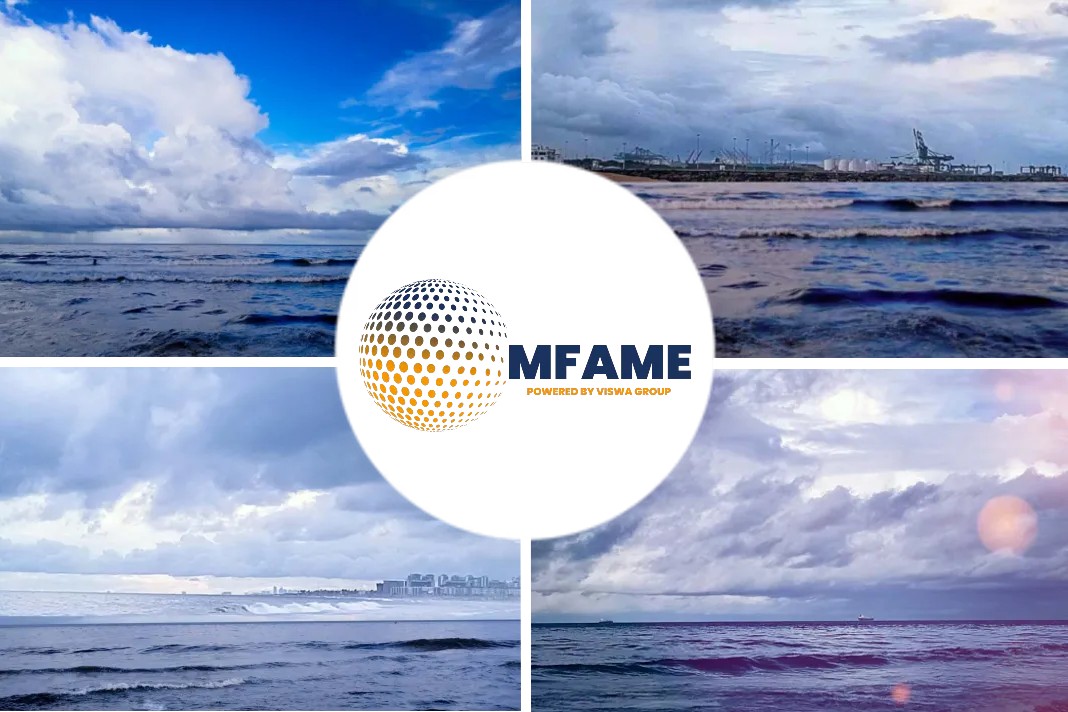Summary:
While the container ship ESTELLE MAERSK, with the Master, 27 crew members and a pilot on board, was proceeding north towards the South Entrance of Kobe Chuo Passage in the Kobe Section of Hanshin Port under escort by the pilot, the container ship JJ SKY, with the Master and 21 crew members on board, was proceeding west-northwest towards the South Entrance of Kobe Chuo Passage, the two vessels collided near the South Entrance of Kobe Chuo Passage at around 07:08:54 on June 7, 2016.
ESTELLE MAERSK sustained abrasion damage on the shell plating of her starboard bow, while JJ SKY sustained a pressure collapse on her bridge port-side wing. However, there were no casualties or fatalities on either vessel.
Probable Causes:
It is probable that this accident occurred, while ESTELLE MAERSK (hereinafter referred to as “Vessel A”) was proceeding north and JJ SKY (hereinafter referred to as “Vessel B”) west-northwest towards the Passage in the Kobe Section of Hanshin Port in a state whereby they would both enter the Passage at about the same time.
Pilot of Vessel A thought that Vessel A would be given priority when entering the Passage and thus continued to proceed north towards the South Entrance of the Passage, while Master of JJ SKY, thinking that Vessel A would navigate astern of Vessel B, increased speed to cut diagonally across the Passage towards the scheduled docking quay to the west of the Passage, as a result of which the two vessels collided.
It is probable that Pilot thought Vessel A would be given priority when entering the Passage and continued to proceed north towards the South Entrance of the Passage because (1) Vessel A was a large vessel in the 400m class and he thought that it would be given priority to enter the Passage by passage control, (2) he had made a request for the order of Passage entry, via Port Radio, to the effect that he wished to enter ahead of the vessel navigating from the Osaka (hereinafter referred to as “Vessel D”), Vessel D had accepted this and set an attitude of entering the Passage after Vessel A, and (3) Vessel A was navigating in accordance with the scheduled Passage entry time notified to Port Radio.
It is probable that Master of JJ SKY thought that Vessel A would navigate astern of Vessel B and increased the speed in an attitude of cutting diagonally across the Passage towards the scheduled docking quay to the west of the Passage because (1) he had heard the communication “Follow Vessel B” between other vessels on VHF, (2) the distance to Vessel C which was navigating ahead of Vessel B was about 0.3M, and he therefore thought that it would be dangerous for Vessel A to pass between Vessel B and Vessel C, and (3) he confirmed the presence of Vessel A by radar and thought that Vessel A would be in an attitude of navigating astern of Vessel B as long as Vessel A did not change course. It is probable that the Vessel A and Vessel B were not communicating by VHF when they were in a state of entering the Passage at about the same time, which contributed to the occurrence of this accident.
Other Findings of Safety-Related Issues:
It is probable that the two Transit Lines shown in the Port Entry Manual were set with the aim of preventing vessels from approaching each other in such a way that their courses would cross near the South Entrance of the Passage, and that navigating along the Passage in the broad expanse of the sea to the south of the Transit Lines would give vessels a margin of time and space for maneuvering in order to avoid a collision with other vessels.
Safety Actions Taken:
- Pilots and Masters should communicate with vessels when there is a risk of colliding by using VHF, escort boats or other means, confirm their maneuvering intentions to each other, and cooperate in efforts to avoid collisions.
- Masters should understand regulations and others pertaining to the waters to be navigated, and should observe them correctly.
- Port administration authorities should make efforts to ensure that vessels entering and leaving ports understand the purpose of Port Entry Manuals.
Recommendations:
The Osaka-Wan Pilots’ Association, of which Pilot A is a member, took the following measures after this accident.
- Pilot A underwent one-day simulation training, using a simulator based on a vessel of the same type and with the same maneuverability as Vessel A.
- Of its two escort boats, it allocated one to point 1M ahead of the Passage, to warn vessels and others against crossing in front of incoming vessels.
Did you subscribe for our daily newsletter?
It’s Free! Click here to Subscribe!
Source: MLIT


















